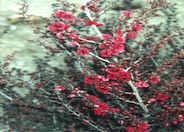
Common name:Tea Tree Red Damask
Botanical name:Leptospermum scoparium 'Red Damask'
Leptospermum scoparium is an evergreen shrub or tree. One half inch wide, red flowers are showy. Branches are densely set with needle-like, fragrant, green leaves.
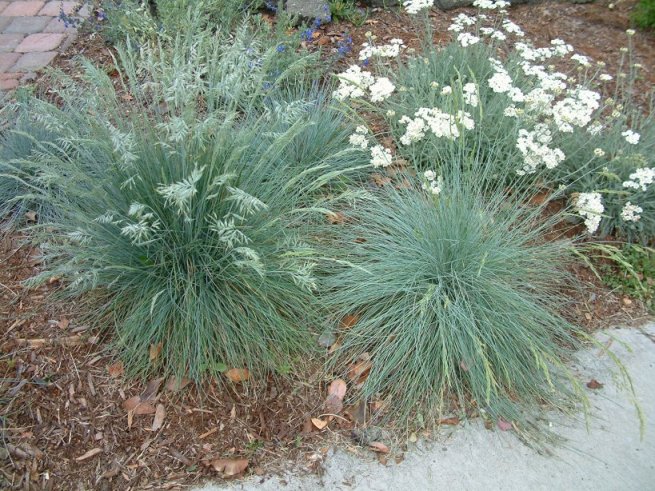
Common name:Blue Fescue
Botanical name:Festuca glauca
This ground cover/grass will grow less than 1' tall and has small, blue green leaves.
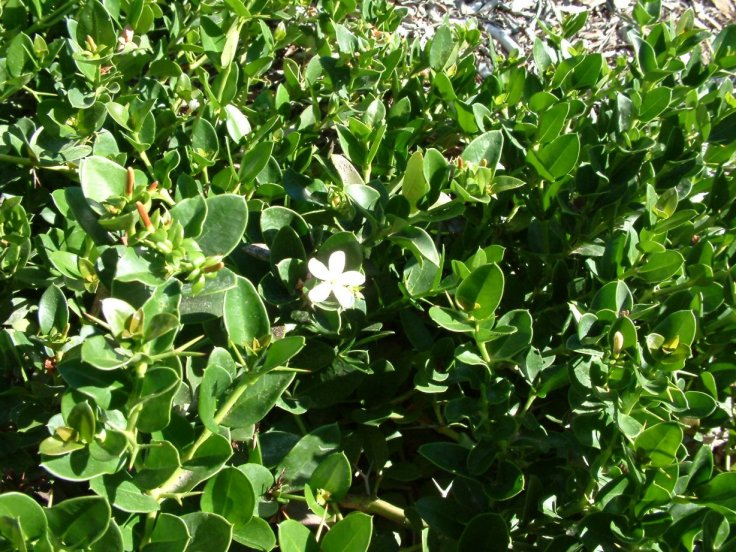
Common name:Ground Cover Natal Plum
Botanical name:Carissa macrocarpa 'Prostrata'
This wonderful ground cover will grow 2' high and can be trained as an espalier. It spreads quickly to provide good cover. It blooms with white flowers followed by red or purple fruit. Thorns make it a good barrier planting.
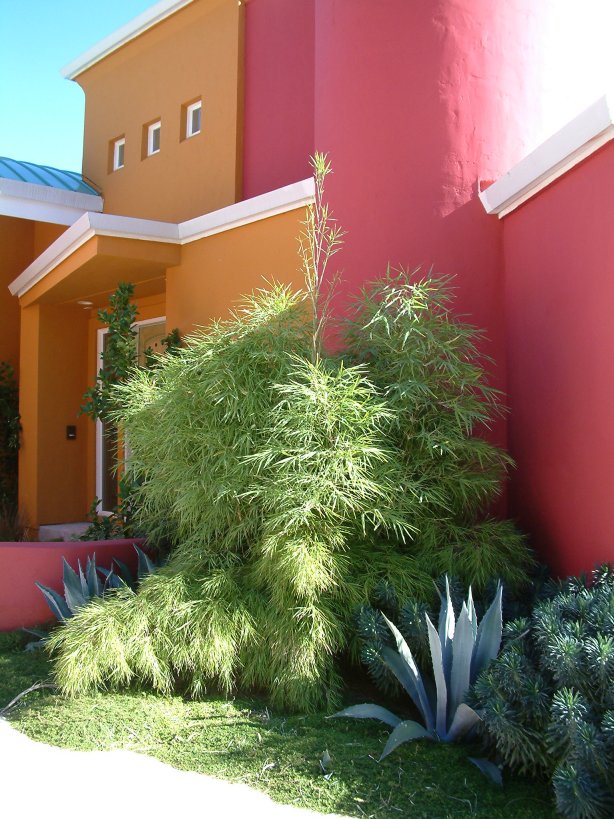
Common name:Mexican Weeping Bamboo
Botanical name:Otatea acuminata aztecorum
This Bamboo is an exotic plant that has tall fronds that sway in the wind like a kelp bed forest. This plant can be invasive.
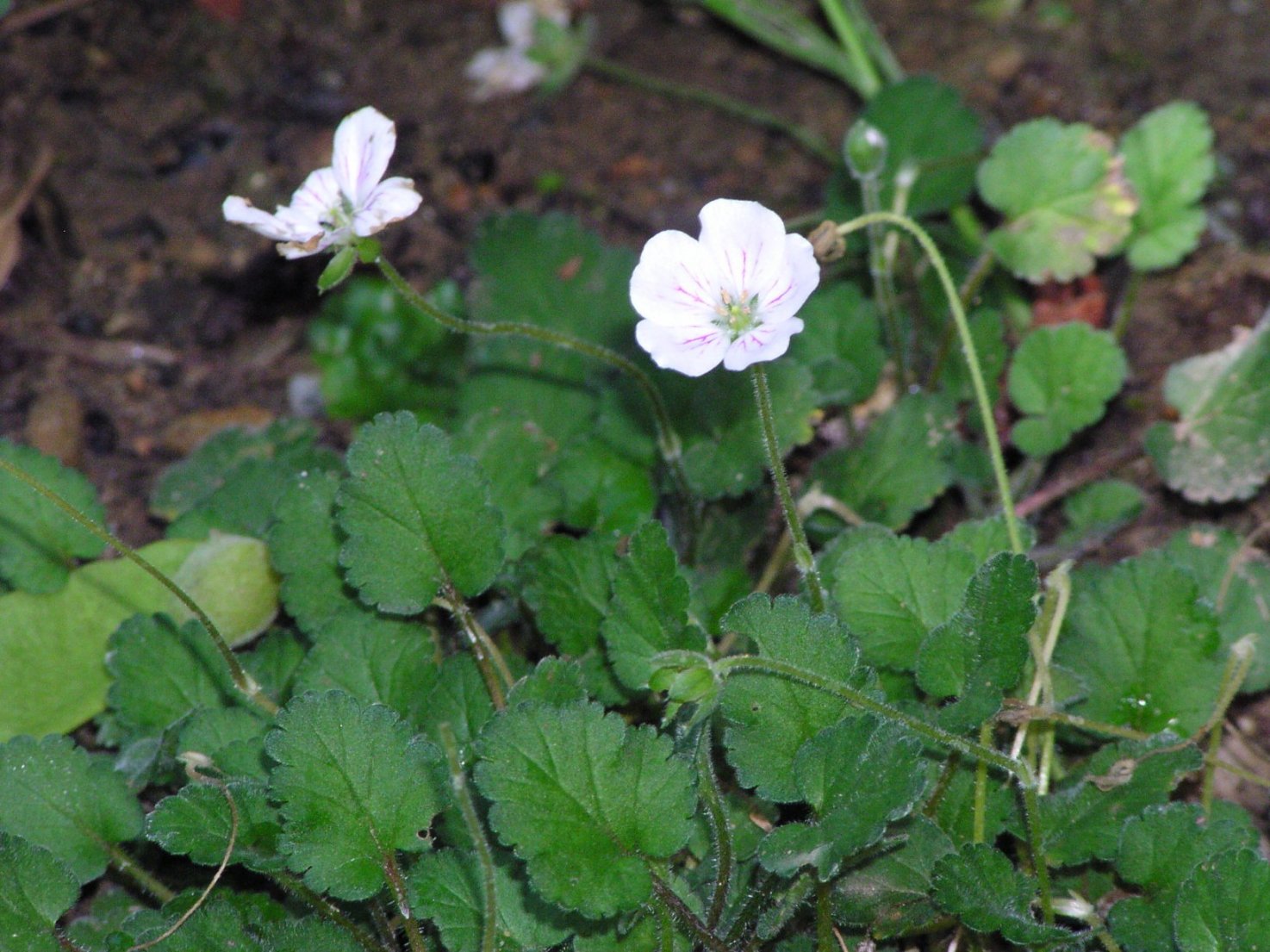
Common name:Pink Cranesbill
Botanical name:Erodium reichardii
This Mediterranean island ground cover stands less than 3 to 6 inches tall and has small, dark green leaves with white or pink flowers that bloom during spring, summer, and fall.
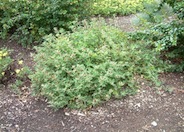
Common name:Apricot Mallow
Botanical name:Sphaeralcea ambigua
This native perennial has a relaxed sprawling form. It usually has light orange flowers but can be white, pink or purple. It starts to look rangy after flowering, so cut to 6" above ground for a fresh start. Leaves are small, grayish green, and 3 lobed. This extremely drought and soil tolerant shrub does best in full sun, even in reflected heat. This is the most drought tolerant of Sphaeralceas and the largest, with up to 100 stems from a single root. Some folks have allergic reaction to the leaves.
| Designer: | Christmas Colors |
Photographer: GardenSoft |
Soils and Compost:
Maintain a two to four inch layer of mulch on the soil surface to reduce weeds, infiltrate rain water, and reduce compaction.
Water Saving Tip:
Integrated Pest Management:
Remove irrigation water and fertilizer from areas where you don't want weeds to grow.

